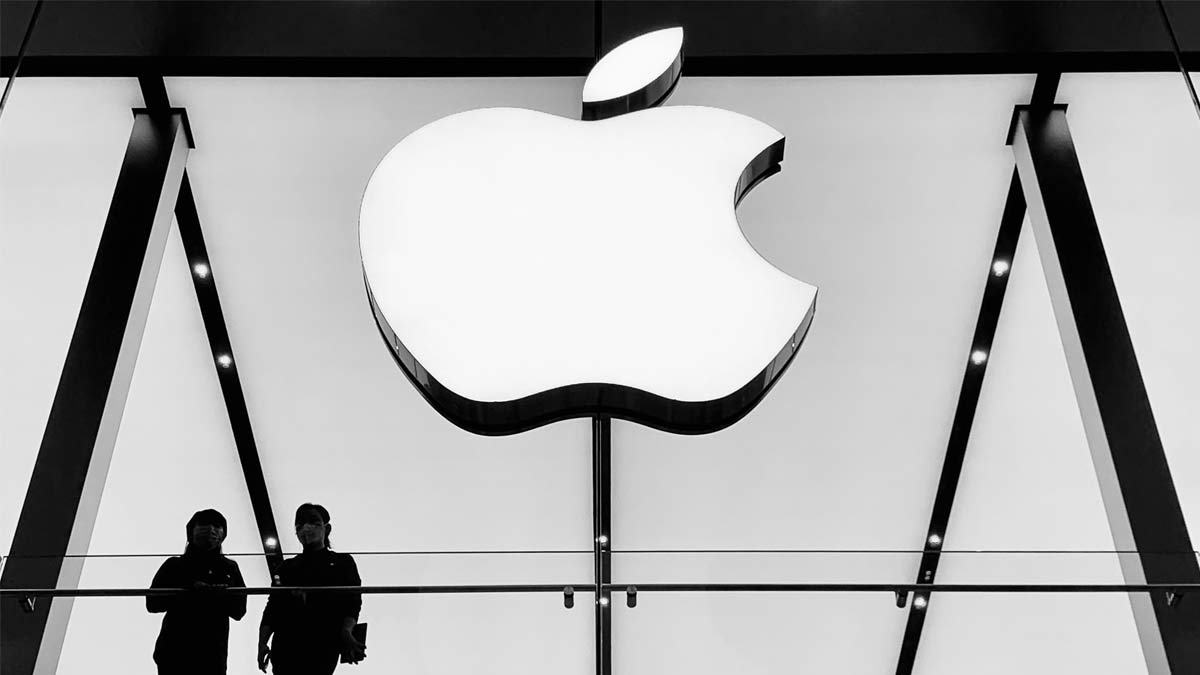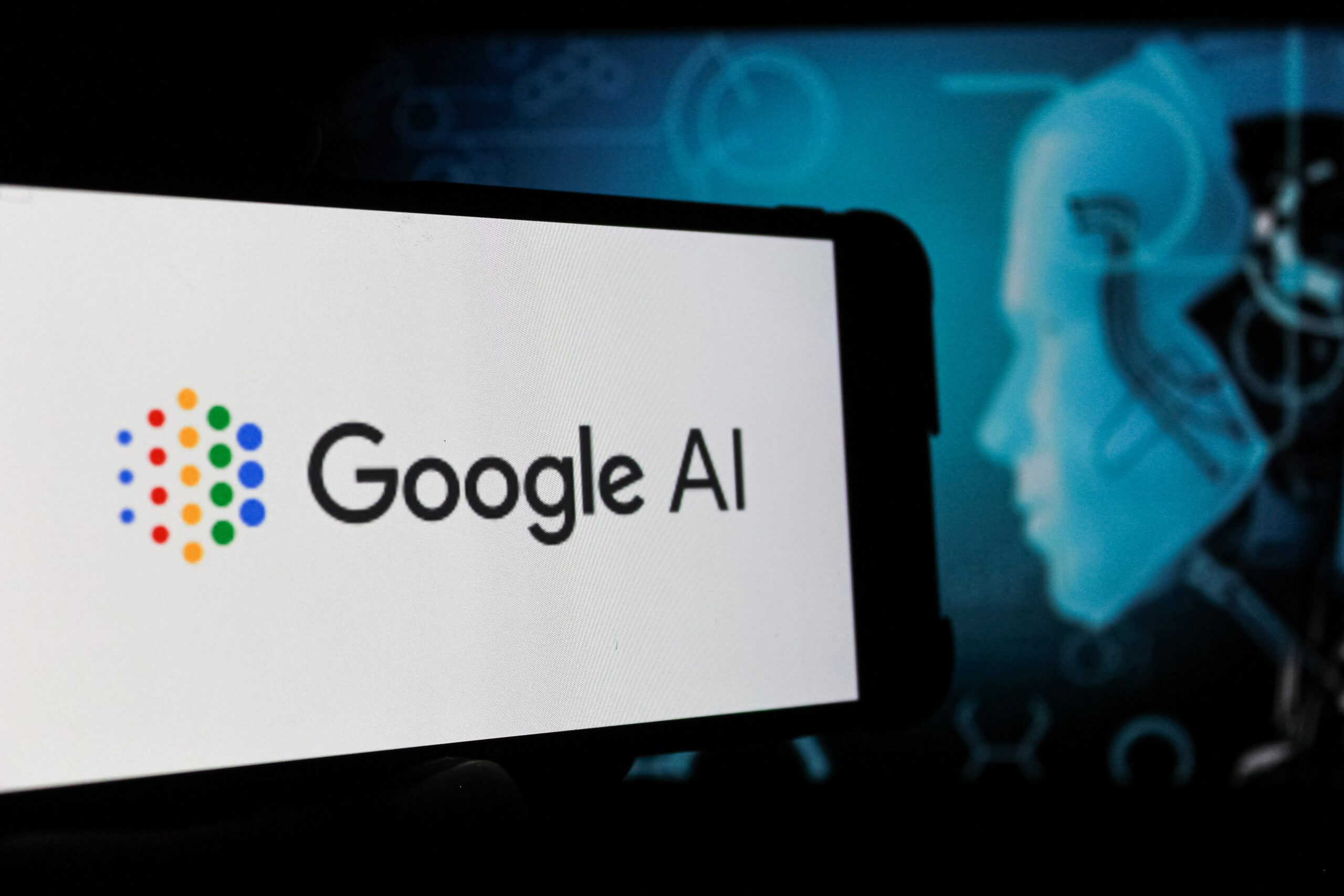Tech
The Genesis of Progress: How Ideas Transform Lives, Powered by Science and Technology
How Ideas Transform Lives, Powered by Science and Technology

Human civilization, in its essence, is a testament to the power of ideas. From the first spark of understanding that led to controlling fire, to the complex algorithms that power artificial intelligence today, every significant leap forward has been birthed from an idea – a novel thought, a daring hypothesis, a fresh perspective. These aren’t mere fleeting thoughts; they are the fundamental building blocks of progress, the seeds that, when nurtured, blossom into changes that profoundly impact the lives of millions, even billions. And in this journey of transformation, science and technology stand as the indispensable engines, translating abstract concepts into tangible realities.
The Unseen Hand of Ideas: Driving Societal Evolution
Ideas are the silent revolutionaries. They challenge the status quo, question established norms, and envision a better future. Consider the radical idea of democracy, which championed the power of the individual over absolute monarchy, forever altering political landscapes and empowering citizens. Or the idea of universal education, which unlocked knowledge for the masses, fostering innovation and social mobility. These aren’t technological advancements in themselves, but profound conceptual shifts that laid the groundwork for entirely new ways of living and organizing society.
The impact of an idea, however, is rarely immediate. It often begins as a whisper, a concept discussed in hushed tones, then debated, refined, and eventually embraced by a growing number of people. It’s this collective acceptance and implementation of an idea that leads to widespread change. Without the initial thought, the audacious dream, there would be no impetus for anything new.
The Symbiotic Relationship: Science and Technology as Idea Amplifiers
Here’s where science and technology enter the narrative as crucial partners. While ideas provide the “what if,” science provides the “how” and technology provides the “how to.”
-
Science: Unveiling the “How” Science is the systematic pursuit of knowledge, the rigorous investigation into the natural and physical world. It takes an idea – perhaps a hunch about how a disease spreads, or a hypothesis about the nature of light – and subjects it to observation, experimentation, and analysis. Scientific inquiry validates, refines, and often proves the feasibility of an idea.
For example, the idea that invisible entities could cause sickness was initially met with skepticism. However, through scientific investigation and the development of germ theory by scientists like Louis Pasteur and Robert Koch, this idea was proven. This scientific understanding then paved the way for life-saving medical interventions. Science provides the foundational understanding that transforms a promising idea into a viable solution.
-
Technology: The “How To” in Action Technology is the application of scientific knowledge for practical purposes. It’s the engineering, the invention, the creation of tools, systems, and processes that bring ideas to life. Once science has validated an idea and provided the principles, technology steps in to build the bridges, the machines, the software, and the infrastructure.
Following the scientific understanding of germ theory, technology developed sterilization techniques, vaccines, antibiotics, and advanced surgical tools. These technological applications directly translated the scientific idea into tangible changes that dramatically reduced mortality rates and increased life expectancy globally.
Case Studies in Transformation: Ideas, Science, and Technology in Action
Let’s look at a few examples where this powerful triad has reshaped human existence:
-
The Information Age: The idea of instantaneously connecting people across vast distances and democratizing access to information was a powerful vision. Scientific breakthroughs in electromagnetism and semiconductor physics provided the underlying principles. Technology then built the telegraph, telephone, radio, television, and ultimately, the internet and smartphones. The result? A globalized world where information flows freely, fostering unprecedented communication, collaboration, and innovation, transforming education, commerce, and social interactions.
-
Modern Medicine: The idea of alleviating suffering and extending life has been a timeless aspiration. Scientific understanding of human anatomy, physiology, microbiology, and genetics has been meticulously accumulated over centuries. Technology has translated this knowledge into sophisticated diagnostic tools (MRI, X-ray), revolutionary drugs (insulin, chemotherapy), advanced surgical procedures, and genetic therapies. The impact on human health and longevity has been nothing short of miraculous.
-
Sustainable Living: As environmental challenges become more pressing, the idea of living in harmony with the planet is gaining paramount importance. Scientific research into climate change, renewable energy sources, and ecological systems provides critical insights. Technology is developing solar panels, wind turbines, electric vehicles, and efficient recycling processes, offering concrete solutions to mitigate environmental degradation and build a more sustainable future.
The Path Forward: Fostering and Supporting Ideas
The journey from idea to impact is not always linear or easy. It requires:
- Openness to New Ideas: Societies and institutions must cultivate environments that encourage critical thinking, questioning, and the free exchange of ideas, even those that challenge established norms.
- Investment in Basic Science: Funding fundamental scientific research, even without immediate practical applications in mind, is crucial. These discoveries often form the bedrock for future technological breakthroughs.
- Support for Technological Development: Investing in research and development, fostering innovation, and creating frameworks that support the commercialization of new technologies are vital for translating ideas into tangible solutions.
- Interdisciplinary Collaboration: The most transformative ideas often emerge at the intersection of different fields. Encouraging collaboration between scientists, engineers, artists, social scientists, and policymakers can lead to truly holistic and impactful solutions.
- Ethical Consideration: As science and technology advance, it’s imperative to engage in thoughtful ethical discussions. Ideas must be implemented responsibly, ensuring they benefit all of humanity and uphold fundamental values.
Conclusion
Ideas are the origin point of all human progress, the initial spark that sets change in motion. Without them, our world would remain static, bound by the limitations of the known. Science and technology are not merely tools; they are powerful accelerators that take these nascent ideas, rigorously validate their potential, and transform them into tangible realities that reshape our world. In an increasingly complex and interconnected global society, fostering a culture that values, supports, and intelligently applies new ideas – driven by the relentless pursuit of scientific understanding and technological innovation – is not just beneficial; it is absolutely essential for the continued betterment of human lives. For those interested in exploring and celebrating the ingenuity that drives our world forward, hubofideas.in aims to be a platform where such transformative concepts are showcased and honored across various fields, particularly within science and technology.
Cyber Security
Red Hat Confirms Security Incident After Hackers Claim Massive Data Breach
Hackers claim to have stolen 570GB of data from Red Hat’s consulting repositories, including sensitive client documents. Red Hat has confirmed a security incident but says its wider services remain unaffected.

Hackers allege theft of 570GB from Red Hat’s consulting repositories, raising concerns over customer exposure.
Red Hat, the open-source software giant owned by IBM, has confirmed a security incident after hackers claimed to have stolen massive amounts of data from its consulting division’s private GitLab repositories. The group behind the attack, calling itself the “Crimson Collective,” alleges that it exfiltrated 570GB of compressed data from over 28,000 internal projects, including sensitive customer documents.
The hackers say they obtained around 800 Customer Engagement Reports (CERs) — detailed consulting documents that may contain network diagrams, architecture plans, credentials, and configuration data from Red Hat’s enterprise clients. Such reports, if authentic, could potentially act as blueprints for attackers to target Red Hat’s customers directly.
Evidence of the breach was shared on Telegram, where the group published file trees, project lists, and snippets from the stolen repositories. They also claimed to have discovered authentication tokens, database URIs, and sensitive secrets embedded within code, which they allegedly used to access downstream customer infrastructure.
Red Hat acknowledged the security incident, confirming that its consulting arm’s GitLab instance was compromised. The company said it has already initiated remediation measures but emphasized that it has found no evidence of a wider compromise affecting Red Hat products, services, or its software supply chain.
In a statement, Red Hat noted:
“We take security incidents very seriously and are actively investigating. At this stage, we cannot verify the attackers’ specific claims, but we are engaging with customers as needed and implementing precautionary steps.”
The Belgian Centre for Cybersecurity has issued an advisory urging organizations that have worked with Red Hat Consulting to rotate credentials, revoke exposed tokens, and review shared configurations. Security experts warn that the leaked CERs could give malicious actors a direct roadmap into client environments.
Industry observers are also raising concerns about Red Hat’s incident response. The attackers allege that their initial disclosures were dismissed or mishandled through routine vulnerability ticketing processes, which may have delayed mitigation.
Adding to the urgency, Red Hat also disclosed a separate critical vulnerability (CVE-2025-10725) in its OpenShift AI platform. With a CVSS score of 9.9, the flaw could allow low-privileged users to escalate to full administrator rights. The company has published mitigation guidance and is working on patches.
The dual challenges — a consulting breach and a critical product vulnerability — highlight the ongoing cybersecurity pressures facing major enterprise vendors. While Red Hat insists its core offerings remain secure, customers are being urged to adopt a cautious approach, particularly those with consulting engagements between 2020 and 2025.
For now, the true scale of the breach remains uncertain. If Crimson Collective’s claims are verified, it could become one of the most serious security incidents to hit the open-source ecosystem in recent years.
AI/ML
AI Powers a New Wave of ‘Hard Tech’ Revolution
A new era of “hard tech” is emerging as AI accelerates breakthroughs in robotics, energy, space, and manufacturing—turning deep tech dreams into reality.

From autonomous drones to nuclear fusion startups, artificial intelligence is accelerating breakthroughs in physical technology like never before.
The tech world is experiencing a shift—from screens and software to steel and silicon. A new wave of innovation dubbed “Hard Tech” is making headlines, and at its core is a powerful catalyst: artificial intelligence.
Hard tech refers to industries that merge advanced physical engineering with deep scientific research, such as aerospace, robotics, energy, biotechnology, and manufacturing. These sectors have traditionally required long development cycles, heavy capital investment, and significant regulatory hurdles. But with AI rapidly reducing complexity, cost, and time-to-market, hard tech is experiencing an unprecedented surge.
Startups and corporations alike are integrating AI not just as an add-on, but as the driving engine behind their operations. Autonomous vehicles and delivery drones now navigate cities using real-time AI modeling. In biotech, machine learning algorithms are accelerating drug discovery timelines by years. Even space exploration and nuclear fusion—once limited by guesswork and experimentation—are becoming more predictable through AI simulation and predictive analysis.
One of the standout examples is in the energy sector. Companies like Helion and TAE Technologies are leveraging AI to manage the chaotic variables in nuclear fusion experiments—controlling plasma behavior and optimizing energy output. In transportation, AI is being embedded into robotaxi systems, electric vertical take-off aircraft (eVTOLs), and long-range drone networks, making logistics faster, safer, and more autonomous.
Investors are taking notice. Venture capital firms that once focused on SaaS and mobile apps are now funding next-generation materials, climate tech, and AI-powered robotics. The funding boom in hard tech is being led by figures like Elon Musk, Sam Altman, and Vinod Khosla—who believe the next trillion-dollar innovations won’t come from social media apps, but from real-world disruption enabled by AI.
What makes this surge unique is not just the technology—it’s the mindset shift. Entrepreneurs, scientists, and engineers are no longer working in silos. They’re building cross-disciplinary teams where physicists work with data scientists, and mechanical engineers pair up with neural network experts. The result is faster prototyping, smarter manufacturing, and solutions that are both scalable and impactful.
However, the rise of hard tech also comes with challenges. Building physical products still requires supply chain resilience, regulatory approval, and hardware expertise—areas where traditional tech firms often struggle. There are also ethical concerns around automation, job displacement, and the militarization of autonomous systems.
Still, the momentum is undeniable. As AI continues to mature, it is becoming the great enabler of hard tech—offering the tools to design, simulate, optimize, and operate systems that were once deemed too complex or too costly.We’re entering an era where breakthroughs in physical technologies—from energy to mobility to space—are happening faster and with greater precision than ever before. And at the heart of it all is a single, transformative force: artificial intelligence.
Gadgets
Apple’s Bold 2025 Lineup: iPhone 17 Pro, iOS 26, iPadOS Multitasking, and MacBook Pro Redesign
Apple is ready to roll out major upgrades in 2025—from a reimagined iPhone 17 Pro and smarter iOS 26 to advanced iPad multitasking and a powerful new MacBook Pro powered by M4. Here’s the deep dive into Apple’s next moves.

Apple is preparing for a sweeping set of updates across its core product lines—ushering in a new era of design, AI integration, and ecosystem alignment. As we move deeper into 2025, details are emerging about the upcoming iPhone 17 Pro, iOS 26, iPadOS upgrades, and a significant MacBook Pro redesign—all pointing toward Apple’s strategy of strengthening user experience across form factors while embedding artificial intelligence and custom silicon deeper into its DNA.
iPhone 17 Pro: A Leaner, Smarter Flagship
The iPhone 17 Pro is rumored to be Apple’s thinnest iPhone yet, thanks to advanced design techniques and materials. Reports suggest a completely re-engineered chassis, featuring under-display Face ID—a move that eliminates the notch and brings a seamless front display.
Titanium will continue to play a central role in construction, offering a lighter yet stronger frame. The camera system is also expected to get another leap forward, potentially integrating a next-gen periscope zoom lens and advanced AI photography capabilities, enhancing Night Mode, Portraits, and real-time scene detection.
The Pro lineup may also see improved thermals and battery optimization, benefiting from Apple’s custom silicon and system-wide software-hardware synergy.
iOS 26: Personalization, Performance, and Apple Intelligence
While not all iPhones will support Apple Intelligence, iOS 26 will still deliver improvements in Siri’s contextual understanding, lock screen personalization, and privacy-first AI features.
Supported models will see deeper on-device AI processing enabling proactive suggestions, real-time summarizations, and smarter keyboard predictions. Apple is also working on tightening its integration between apps and AI, ensuring native experiences like Mail, Notes, and Safari become more intuitive.
Privacy continues to be a focus, with Apple reportedly implementing Secure Enclave-enhanced AI routines, ensuring that even with smarter intelligence, your data remains yours.
iPadOS: Finally, Real Multitasking?
After years of incremental updates, Apple appears to be taking iPad multitasking seriously in 2025. The next iteration of iPadOS may feature a more dynamic Stage Manager, with support for freer window resizing, persistent app states, and advanced keyboard shortcuts—all aiming to transform the iPad into a credible laptop alternative.
This is in line with Apple’s broader effort to blur the lines between desktop-class workflows and touch-first interaction. The support for external displays is also expected to be more robust, possibly allowing independent spaces per screen.
MacBook Pro: M4 and Beyond
Apple is also gearing up to refresh the MacBook Pro lineup, potentially introducing the M4 chip, designed not just for speed, but for AI optimization and graphical performance.
The 2025 MacBook Pro could see display enhancements (including potential OLED variants), better power efficiency, and a lighter chassis, continuing Apple’s trend of slimming down without compromising on power.
The M4 is expected to focus heavily on AI and machine learning tasks—running Apple Intelligence models locally, enabling creative professionals to perform complex rendering, editing, and data science operations faster than ever before.
This shift shows Apple’s intention to make the MacBook Pro not just a workhorse but a future-ready AI powerhouse.
A Unified, AI-First Ecosystem
The convergence across devices is becoming more evident. With iOS 26, iPadOS, and macOS Sonoma’s successors, Apple is building a deeply unified, AI-powered experience—where workflows transcend devices and features feel consistent across platforms.
This is Apple’s answer to the growing wave of AI integration across the tech industry—balancing innovation, user control, and privacy.
While many features will be exclusive to higher-end, M-series or A-series devices, Apple’s approach seems to favor evolution over disruption—prioritizing seamless integration and everyday usability over flashy experiments.
Conclusion
Apple’s 2025 strategy signals a maturing but still bold tech company—pushing the limits of its hardware, perfecting its software ecosystem, and laying a strong foundation for AI-powered workflows. Whether you’re a casual user or a creative professional, the coming months are shaping up to be one of the most exciting periods in Apple’s recent history.
-
Fashion8 years ago
These ’90s fashion trends are making a comeback in 2017
-

 Entertainment6 months ago
Entertainment6 months agoSquid Game Season 3 Trailer Teases a Brutal Finale: Gi-hun Returns for One Last Game
-
Fashion8 years ago
According to Dior Couture, this taboo fashion accessory is back
-
Entertainment8 years ago
The old and New Edition cast comes together to perform
-

 Science5 months ago
Science5 months agoVera C. Rubin Observatory Unveils First-Ever 3,200-Megapixel Images
-
Sports8 years ago
Phillies’ Aaron Altherr makes mind-boggling barehanded play
-
Business8 years ago
Uber and Lyft are finally available in all of New York State
-
Business8 years ago
The 9 worst mistakes you can ever make at work









